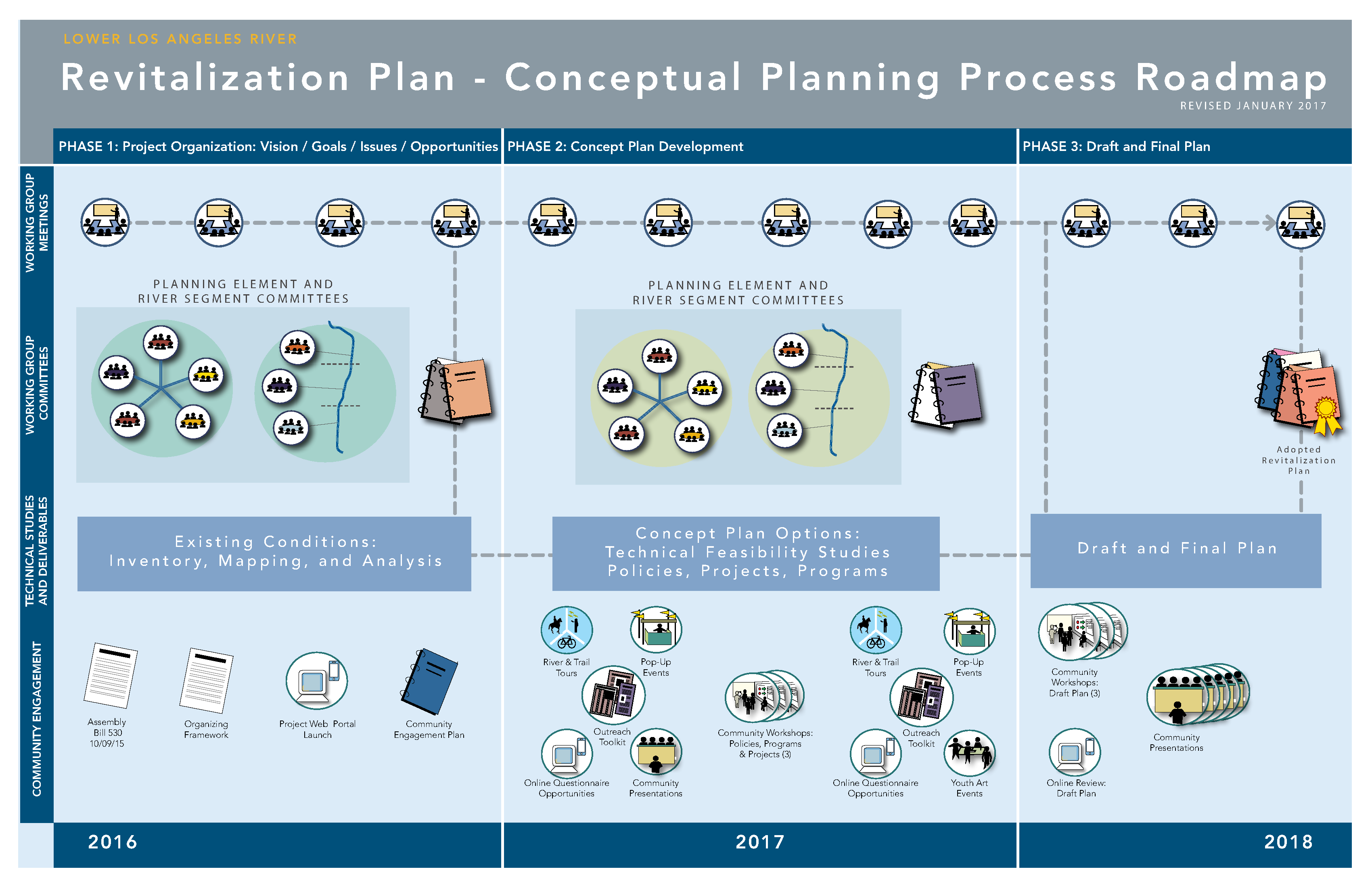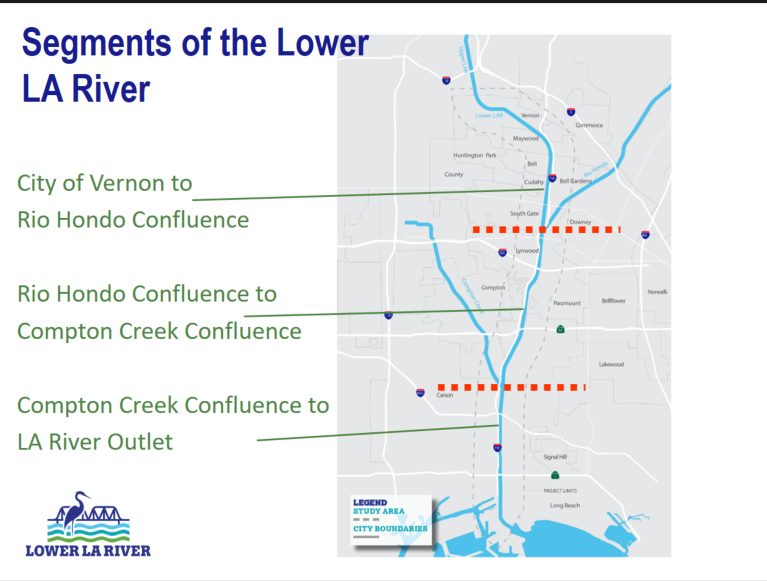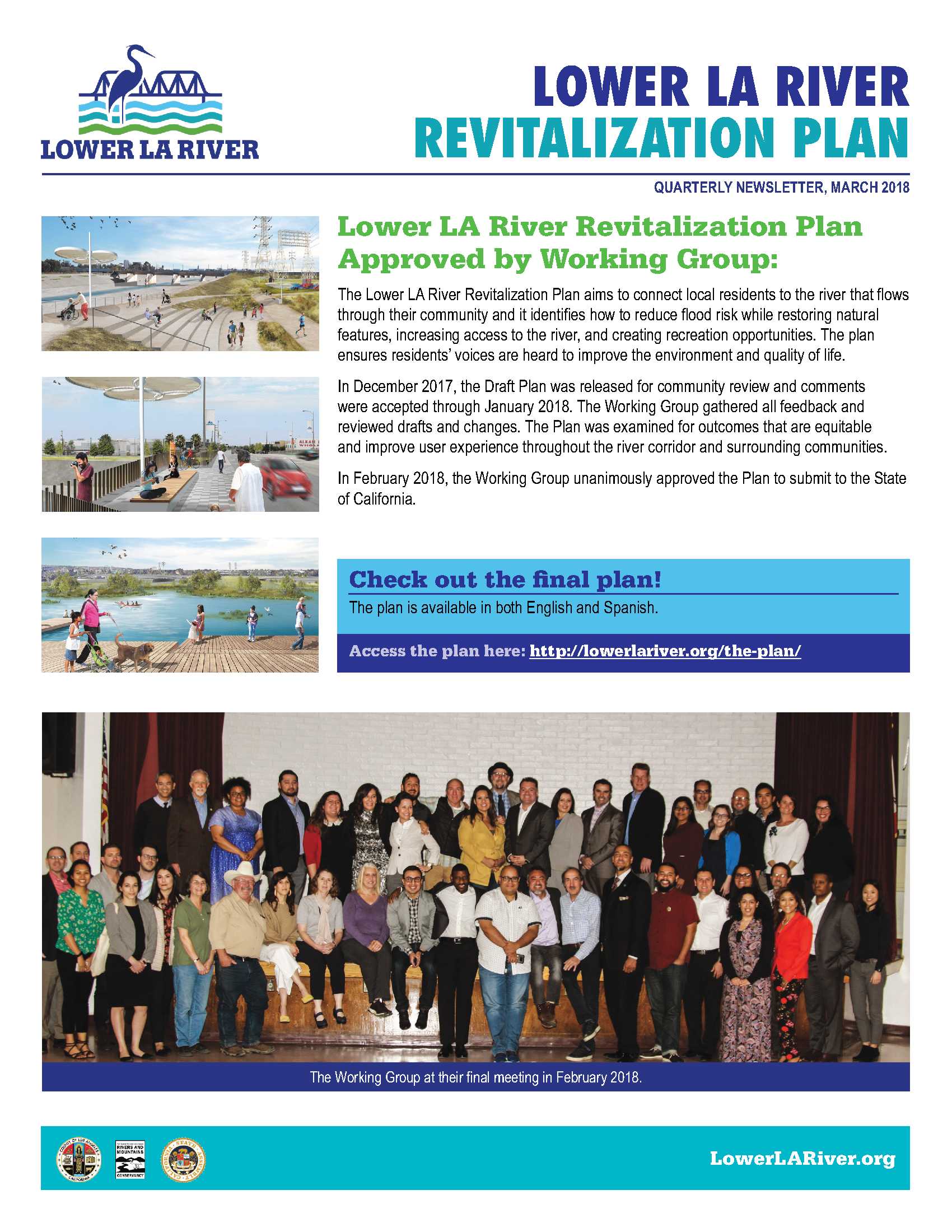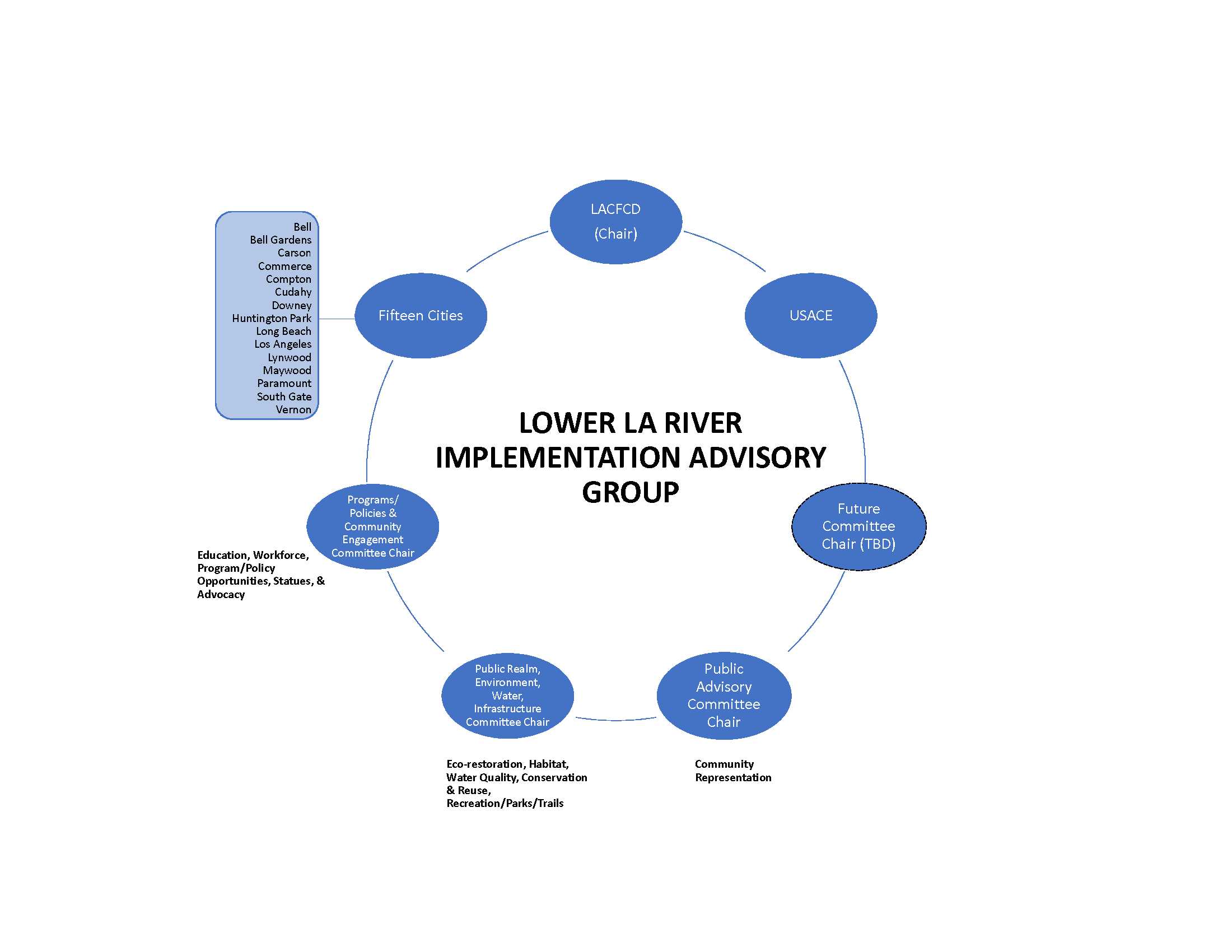PLAN PROCESS & OUTCOMES
The Lower LA River Revitalization Plan (the Plan) seeks to inspire local advocates and decision-makers and serves as a guide for creating vibrant spaces in the river corridor which is beneficial to the community and environment.
The appointed Working Group formed committees that addressed issues related to economics, health, equity, safety, accessibility, connectivity, green space, transportation, water, and environment. The Working Group created three committees to focus on specific segments of the Lower LA River (City of Vernon to Rio Hondo Confluence, Rio Hondo Confluence to Compton Creek Confluence, and Compton Creek Confluence to LA River Outlet) and five Plan Element Committees to develop the components of the Plan.
Three of the Plan Element Committees set up specific goals and objectives to guide how the Plan is completed in order to meet the Lower LA River communities’ needs and guide the future implementation of the Plan. See the committees with links below to see the goals and objectives.
Plan Element Committees
- Community Economics, Health and Equity
- Community Engagement
- Implementation
- Public Realm
- Water and Environment
The Working Group convened for almost two years through 22 publicly held working group and 58 committee meetings to gather feedback and design a truly collaborative and inclusive planning process. To ensure that revitalization efforts included in this Plan were selected and designed to serve to the needs of the river communities and improve their quality of life, the Working Group developed a planning process to select appropriate locations and imagine restoration efforts which would provide multiple benefits for diverse populations. The Working Group also solicited ideas and inspiration from the community through extensive outreach and input events.
Through a transparent and community-driven process, the Plan identified 155 multi-benefit project opportunities within one-mile of the river which would address the communities’ revitalization objectives in a balanced and equitable manner. Seven signature projects were identified by the Working Group as key opportunities to meet the goals and objectives of the Plan, and underwent more detailed analysis.
- Atlantic Blvd and Upper Segment Multi-Use Easement
- Cudahy River Park
- Rio Hondo Confluence
- Middle Segment Crossover and Multi-Use Easement
- Compton Creek Confluence
- Wrigley Heights River Park
- Willow Street Improvements
Along with specific project opportunities, the Working Group developed four project templates for multi-use path enhancements, complete streets, river channel enhancements, and bridge crossing improvements. These templates will help enable rapid revitalization, connectivity and consistency between new projects.
Since social equity was one of the top concerns of the Working Group, a Community Stabilization Toolkit was developed to help support the existing communities as revitalization changes start to go in place. The Plan acknowledges that each city has authority over its respective land-use planning policies and guidelines outside the river channel and that each city shall individually determine which tools provide the greatest practical benefit for implementation.
The Community Stabilization Toolkit includes strategies for:
• Community Benefits Agreements
• Inclusionary Housing Policies
• Locally Owned Business Support
• No Net Loss Housing Policies
• Rent Control Ordinances
• Workforce Development
• Community Land Trusts
To take advantage of the new educational opportunities created by revitalization efforts, the Working Group developed a Watershed Education Plan to gather existing educational resources and recommend new and improved methods for building awareness about the Lower LA River. The Watershed Education Plan identifies ways to engage the community about everyday activities (such as driving a car, watering a lawn, picking up pet waste) and their effects on watershed and environmental health.
Finally, the Plan recommends establishing an Implementation Advisory Group that will be central to carrying out the Plan based on the guiding principles developed by the Working Group. The Implementation Advisory Group will provide guidance on prioritization, funding, and implementation of projects and will include community representation to ensure that the public’s voice is heard.




